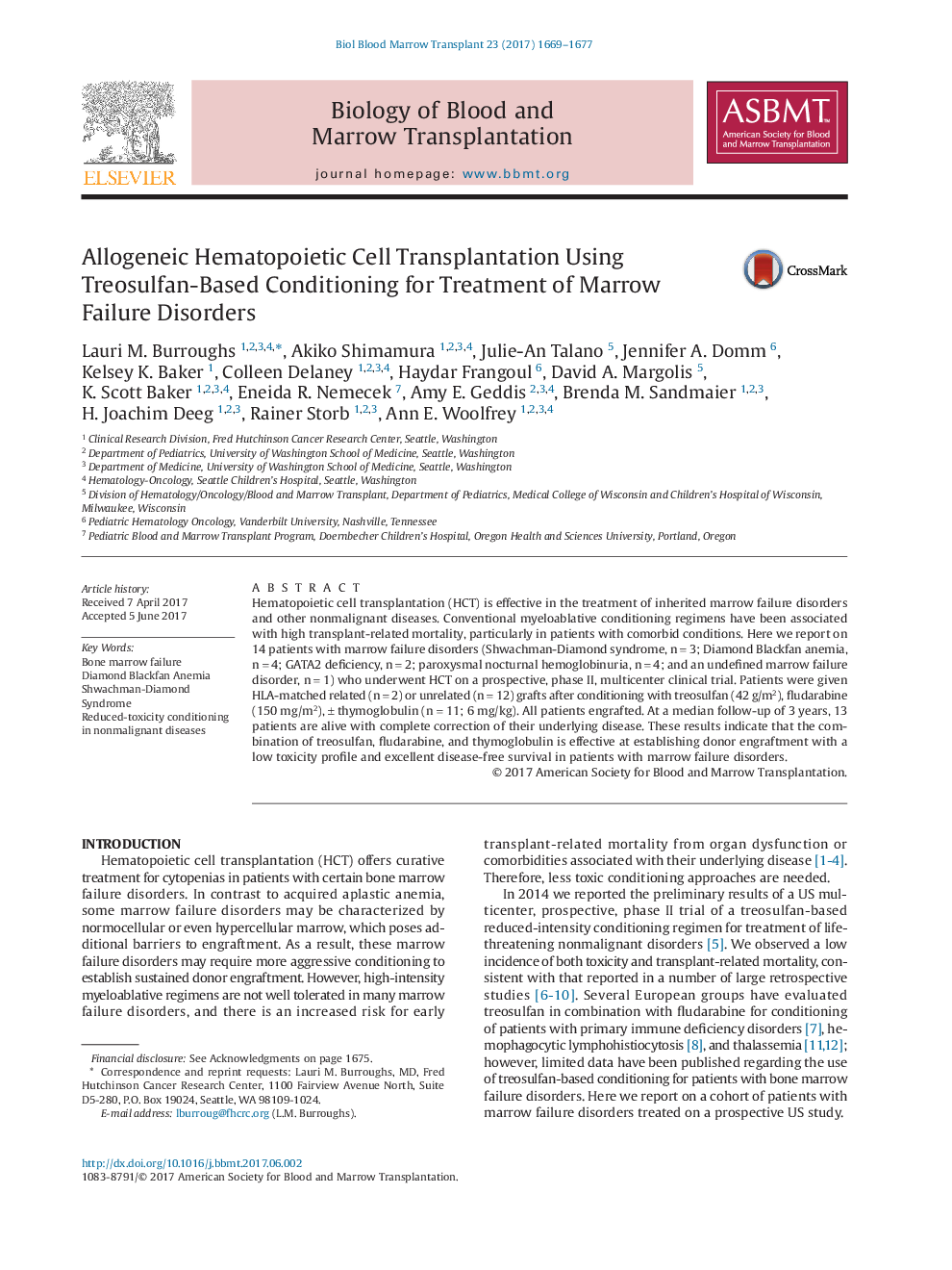| Article ID | Journal | Published Year | Pages | File Type |
|---|---|---|---|---|
| 5524052 | Biology of Blood and Marrow Transplantation | 2017 | 9 Pages |
â¢Treosulfan-based conditioning has a low toxicity profile.â¢High level of donor engraftment in marrow failure disorders.â¢Excellent disease-free survival.
Hematopoietic cell transplantation (HCT) is effective in the treatment of inherited marrow failure disorders and other nonmalignant diseases. Conventional myeloablative conditioning regimens have been associated with high transplant-related mortality, particularly in patients with comorbid conditions. Here we report on 14 patients with marrow failure disorders (Shwachman-Diamond syndrome, nâ=â3; Diamond Blackfan anemia, nâ=â4; GATA2 deficiency, nâ=â2; paroxysmal nocturnal hemoglobinuria, nâ=â4; and an undefined marrow failure disorder, nâ=â1) who underwent HCT on a prospective, phase II, multicenter clinical trial. Patients were given HLA-matched related (nâ=â2) or unrelated (nâ=â12) grafts after conditioning with treosulfan (42 g/m2), fludarabine (150âmg/m2), ± thymoglobulin (n = 11; 6âmg/kg). All patients engrafted. At a median follow-up of 3 years, 13 patients are alive with complete correction of their underlying disease. These results indicate that the combination of treosulfan, fludarabine, and thymoglobulin is effective at establishing donor engraftment with a low toxicity profile and excellent disease-free survival in patients with marrow failure disorders.
